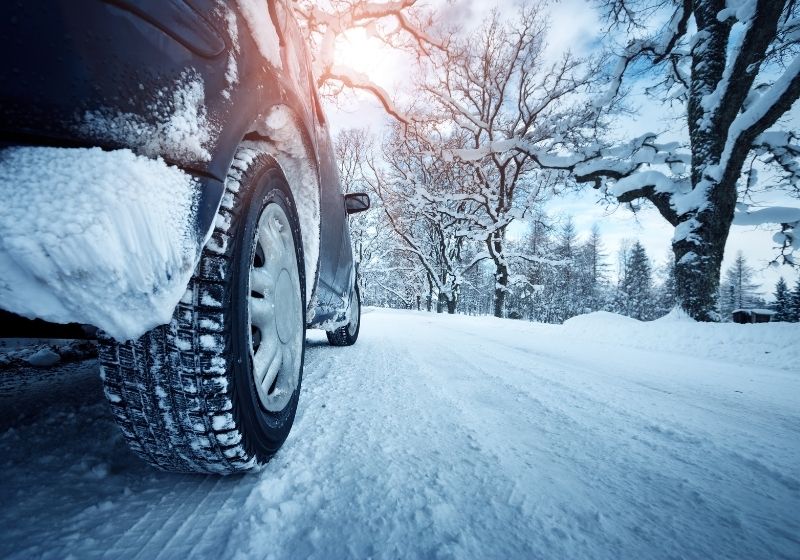Practical Prepper
Winterize Car | 13 Ways on How to Winterize a Car
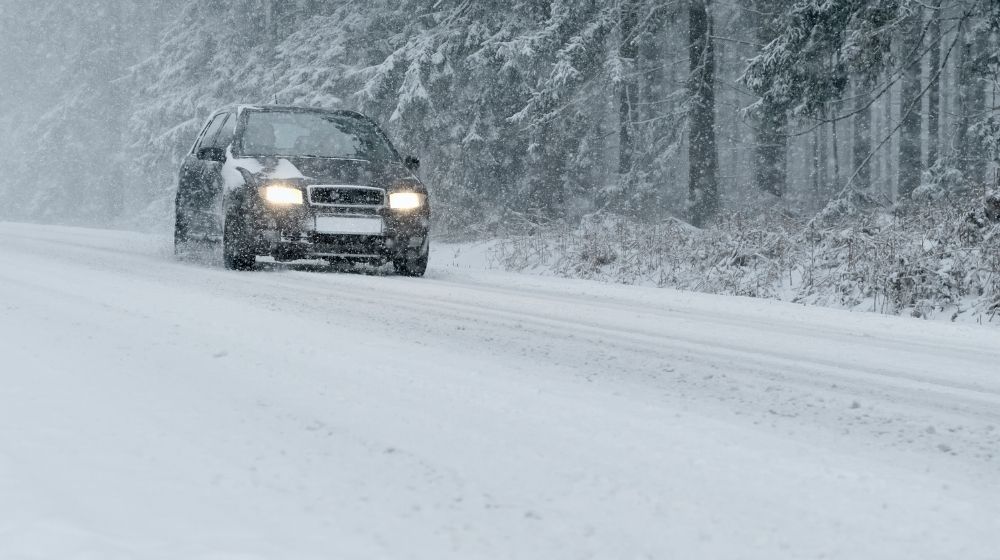
Stress-free winter travels require you to winterize a car by prepping it inside and out for changing road conditions. Whether you are a guru or a novice, these tips will nudge you in the right direction to winterize your car.
RELATED: Winter Survival Kit: The Prepper’s Guide To Winter Survival
13 Surefire Tips to Winterize Your Car for Hassle-Free Winter Travels | Winterize Car
Click here to jump to the infographic
1. Keep a Winter Safety Kit
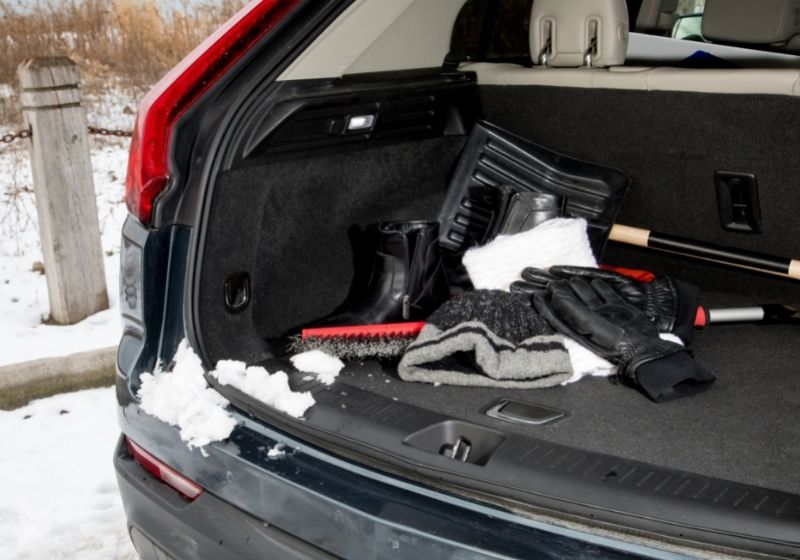
You can never be too prepared as a lot can happen during snowy weather. Therefore consider packing up a safety kit with common emergency supplies and tools before heading off on a trip.
Some of the things you can include in your winter safety kit include:
- Flashlight and batteries
- Matches
- Flares
- First Aid Kit
- Ice scraper
- Extra warm clothing
- Jumper cables
- A shovel and bag of sand
- Extra antifreeze
- Phone
- Car tool kit
2. Switch to Winter Specialized Tires
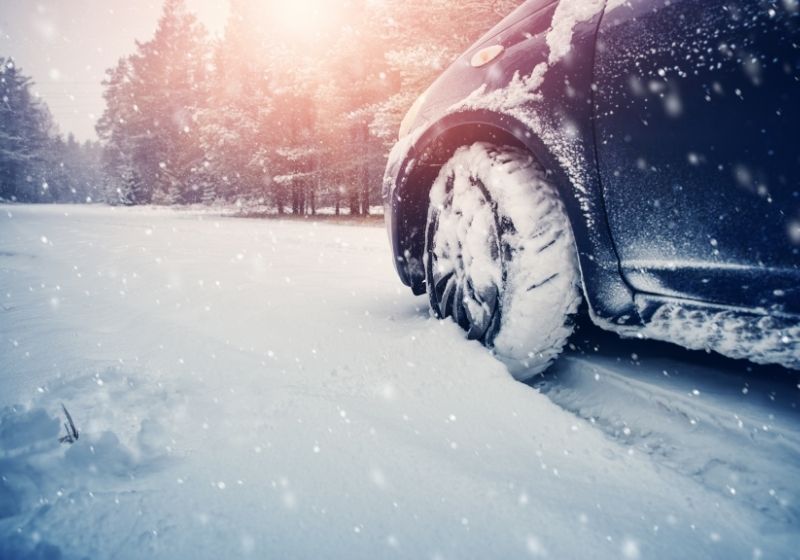
A large part of winterizing your car is switching to winter tires. This is especially so when you live or visit places with extremely cold winter temperatures.
Though all-season tires will still work in winter conditions, there is a high chance you will not get the maximum performance ideal for your environment. This is primarily because they are prone to hardening around or below freezing temperatures reducing grip and traction to the road.
Winter tires on the other hand are designed to withstand cold temperatures without hardening, giving them better traction on snow, dry pavement, ice, and even slush. However, all-season tires will serve you if you don’t experience intense winters.
3. Service Your Car for Winter Conditions
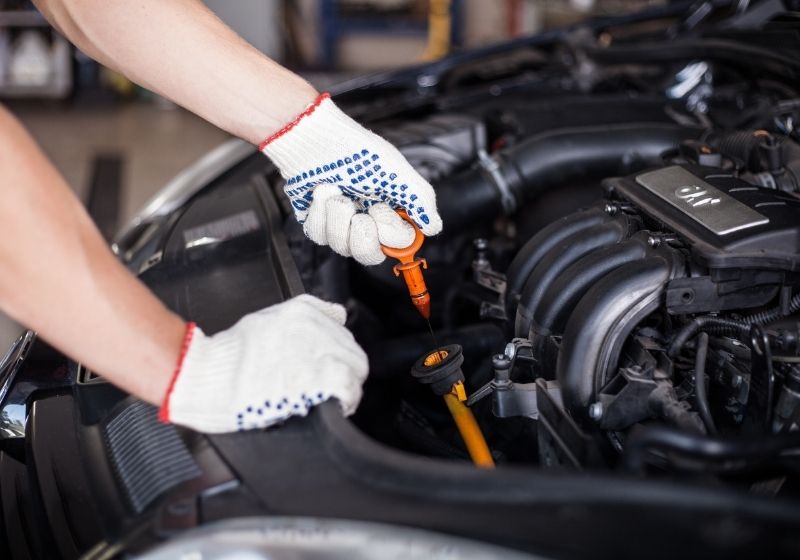
Another way to winterize your car is to have it serviced in preparation for the challenges that come with winter. Some of the aspects to have your mechanic pay attention to include:
- Brakes: While cold temperatures don’t necessarily affect brakes, a thorough check-up will ensure optimal performance in winter conditions.
- Battery: Since battery power reduces with a decrease in temperatures, ensuring yours is in the right condition significantly reduces the risk of breaking down. Batteries in the range of 600 CCA and above guarantee optimal performance in winter weather.
- Hoses, belts, spark plugs, cables, and wires: While these can malfunction at any season of the year, winter has to be the worst time as they can leave you stranded in plummeting temperatures for a long time.
- Cooling system: Though the recommended antifreeze to water ratio is between 50/50 and 70/30, it is advisable to consult your technician on the right ratio and antifreeze for your car type to avoid freezing and corrosion.
4. Maintain the Right Tire Pressure
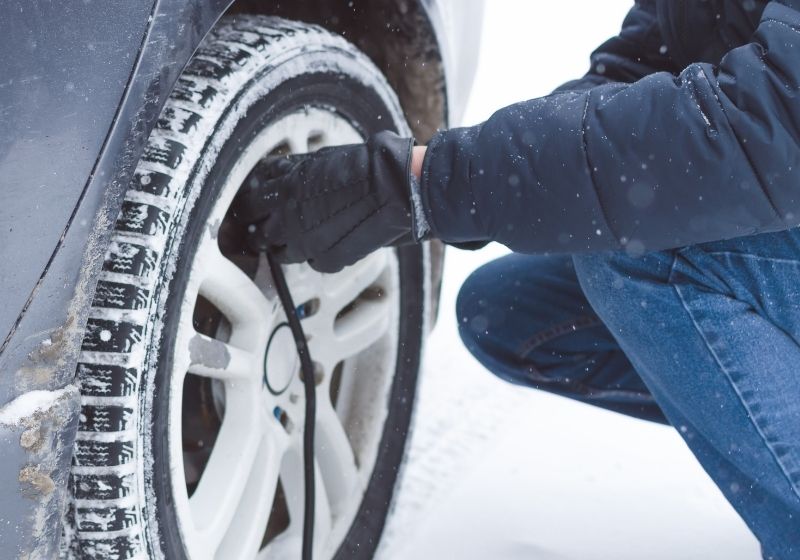
A 10-degree change in temperature could result in a loss or gain of 1 PSI hence the reason you should inspect your tire pressure regularly during winter and refill as needed. You can find the recommended pressure for your tires in your vehicle manual or the tire placard in the jamb on the driver’s side door.
5. Install Winter Wiper Blades
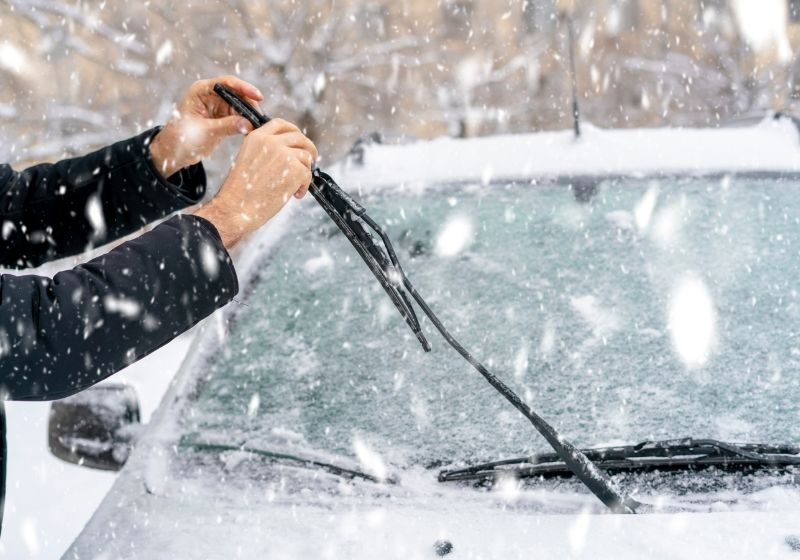
These wiper blades come equipped with rubber that prevents ice and snow from collecting on the blades. However, remember to remove them during spring as they are heavier than regular wipers and increase the load on the wiper motor.
6. Always Keep the Gas Tank at Least Half-Full
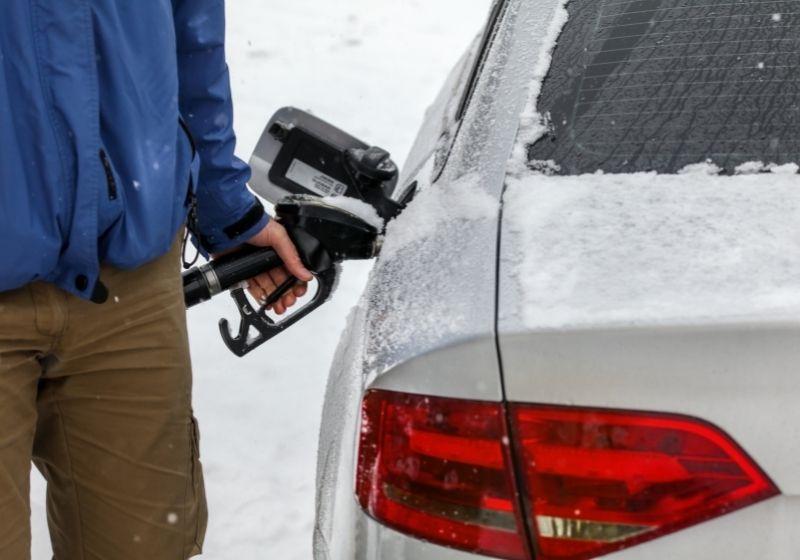
Fill up your tank as often as you possibly can. This is because a full tank is more important in winter than in summer as it reduces condensation, which may prevent the gas line from freezing.
What’s more, your engine might be the only way to stay warm when stranded as you wait for help to arrive.
RELATED: Winter Foraging | Guide to Foraging Winter Survival Food
7. Inspect the Thermostat

Inspecting your thermostat is a great way to ensure your vehicle’s interior heats up. The thermostat strategically sits between the radiator and engine.
Here it facilitates the movement of the coolant through the engine, to the radiator, and through the engine again.
A faulty car thermostat therefore can prevent your car’s interior from warming up, not to mention causing serious engine damage.
8. Fill the Washer Fluid
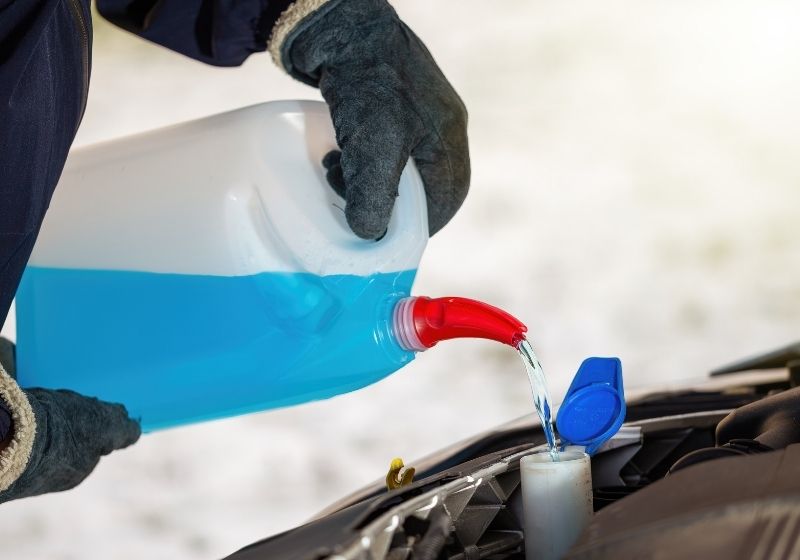
A single snowstorm is enough to exhaust a large amount of the washer fluid hence the need to refill the reservoir frequently with a wiper fluid designed for winter conditions.
Add a bottle of washer fluid antifreeze to the reservoir if you’re not sure if the washer fluid you are using is formulated for low temperatures.
9. Keep an Eye on Temperature Fluctuations
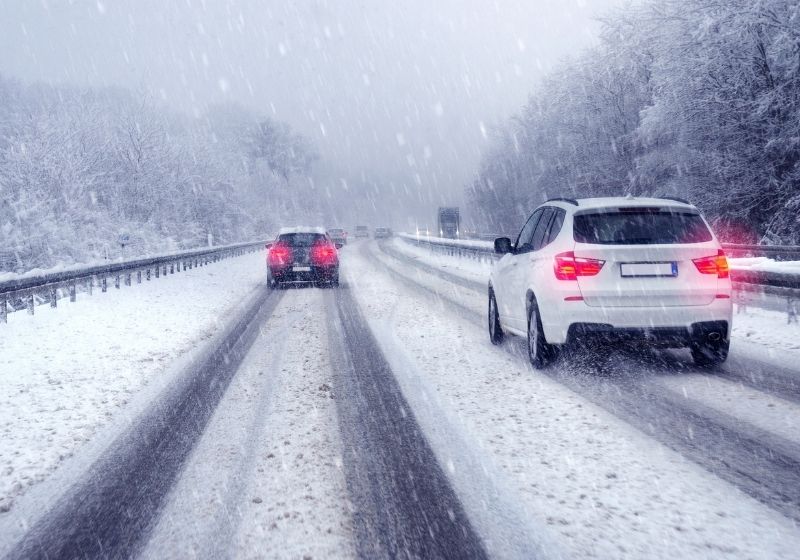
Remember to always check for how temperatures may fluctuate whenever you’re planning on going for a long winter drive. This is because changing temperatures can affect your driving ability as well as tire traction.
For instance, how one should drive in 0-degree weather is different from how one should in 32-degree weather. Ideally, you’ll have better traction at 0-degrees than at 32-degrees due to surfaces becoming more slippery with higher winter temperatures.
10. Ensure Your Rear Window Defroster Is Working Properly
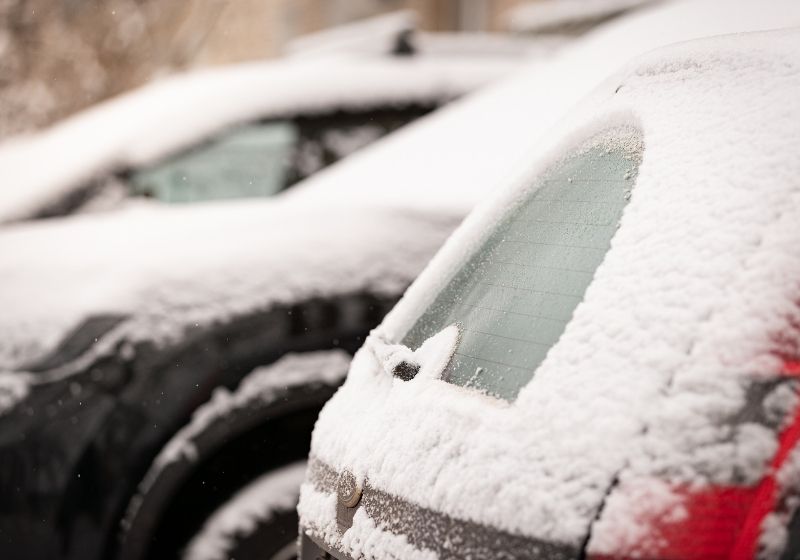
Being able to see behind you when driving is as important as seeing ahead of you. It is no wonder several states have laws requiring all car windows to be clear of debris and condensation.
Therefore, ensure that your rear-window defroster is in great working condition before the cold weather arrives when winterizing your car to ensure safe winter driving.
11. Familiarize Yourself with Preparedness for Winter Emergencies
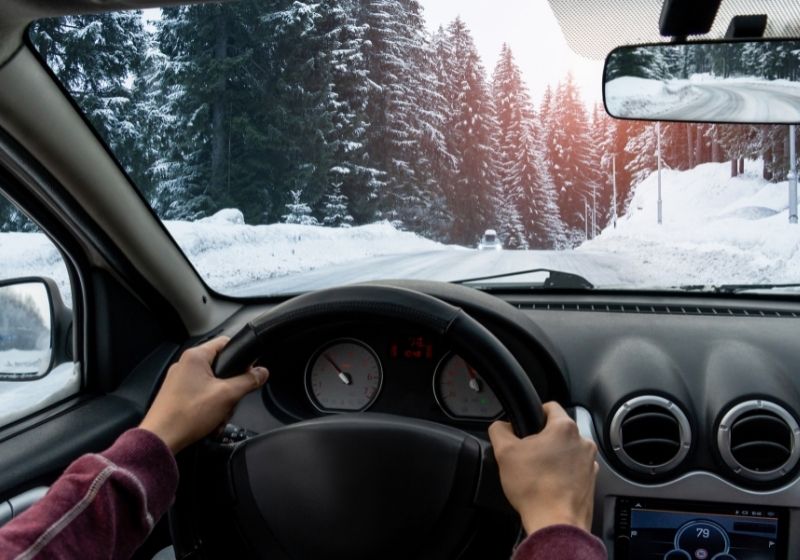
Part of winterizing your car entails knowing what to do with it should you get stuck in an emergency like a storm. Here some pointers include:
- Don’t leave your car to avoid losing sight of it
- Turn on your dome lights to attract attention
- Avoid carbon monoxide poisoning by running your car long enough to stay warm as opposed to doing it for extended periods.
12. Regularly Change Your Cabin Air Filter
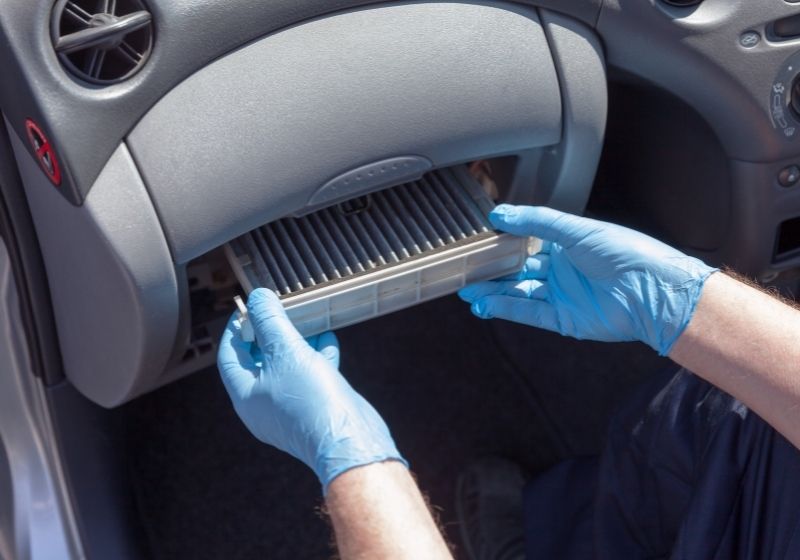
Failure to regularly change your cabin air filter comes with a fair share of disadvantages. For instance, a dirty one can significantly slow down window defogging, cause the HVAC system to perform poorly, and fail to filter out airborne allergens and contaminants.
Moreover, overdue cabin air filters are prone to producing a musty odor that engulfs the entire vehicle. Therefore, make an effort to swap out your cabin air filter at their recommended intervals for more defrost power and easier breathing.
13. Choose 4WD or AWD
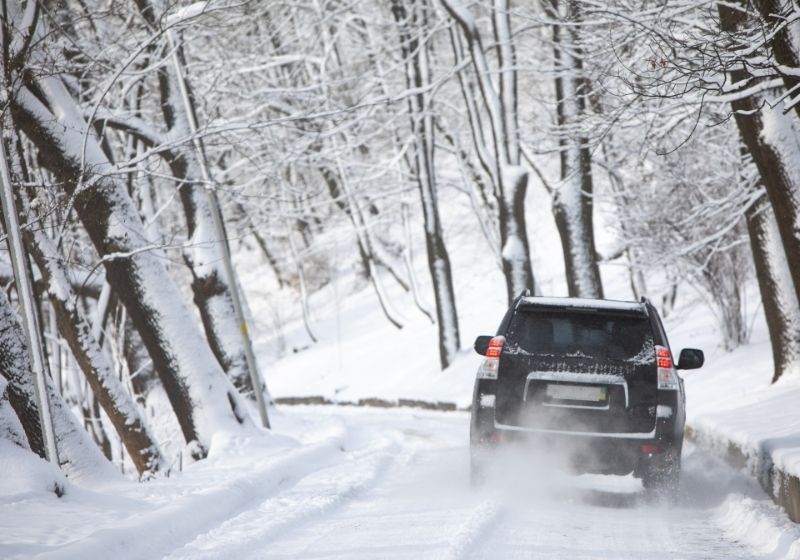
Here’s an infographic guide that you can use. Feel free to download, save and share it with your loved ones:
Watch this video by Speed Academy on how to properly store your car – 12 tips for winter storage:
Each of these systems offers improved traction, especially in snow and ice. However, check your vehicle’s manual to know how to activate the 4-wheel drive system if it features manual controls. Confirming this from the manual will prevent you from causing damage to the system.
With temperatures dropping and road conditions changing, it is equally important for your vehicle to be up for the challenges that come with winter as it is for your driving skills. This calls for a little more care on your vehicle to get you through and that is the know-how the tips herein provide you with.
Are you experienced at winterizing car for winter? Share with us some of your tips in the comment section below!
Up Next:
- 10 Best Winter Camping Gear To Keep You Warm On Your Adventures
- How To Stay Warm In Winter | How To Heat Your Home
- Emergency Shelters and Medical Treatment
Don’t forget to stay connected with us on Facebook, Twitter, Pinterest, and Instagram!
-

 Do It Yourself7 months ago
Do It Yourself7 months agoParacord Projects | 36 Cool Paracord Ideas For Your Paracord Survival Projects
-
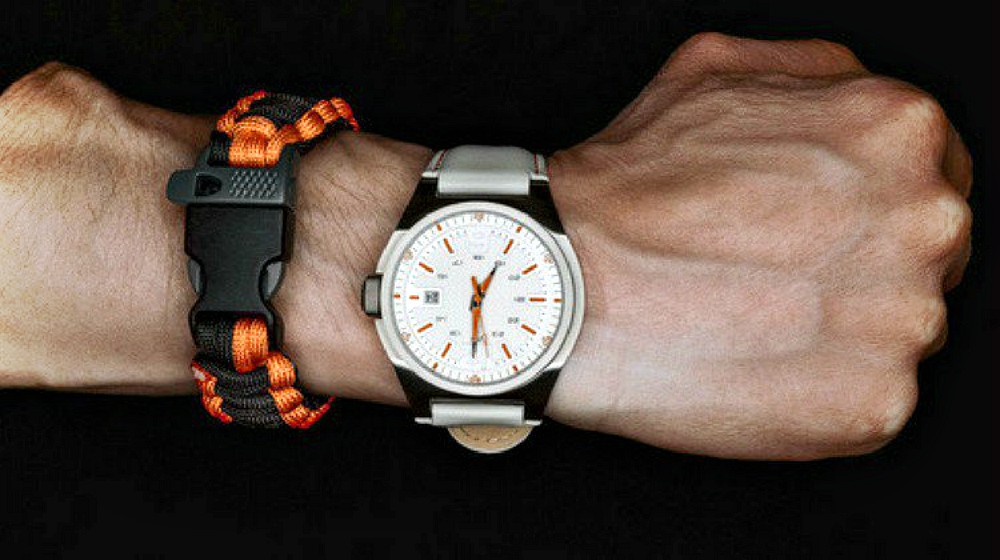
 Do It Yourself9 months ago
Do It Yourself9 months agoHow To Make Paracord Survival Bracelets | DIY Survival Prepping
-

 Do It Yourself9 months ago
Do It Yourself9 months ago21 Home Remedies For Toothache Pain Relief
-

 Do It Yourself10 months ago
Do It Yourself10 months agoSurvival DIY: How To Melt Aluminum Cans For Casting
-
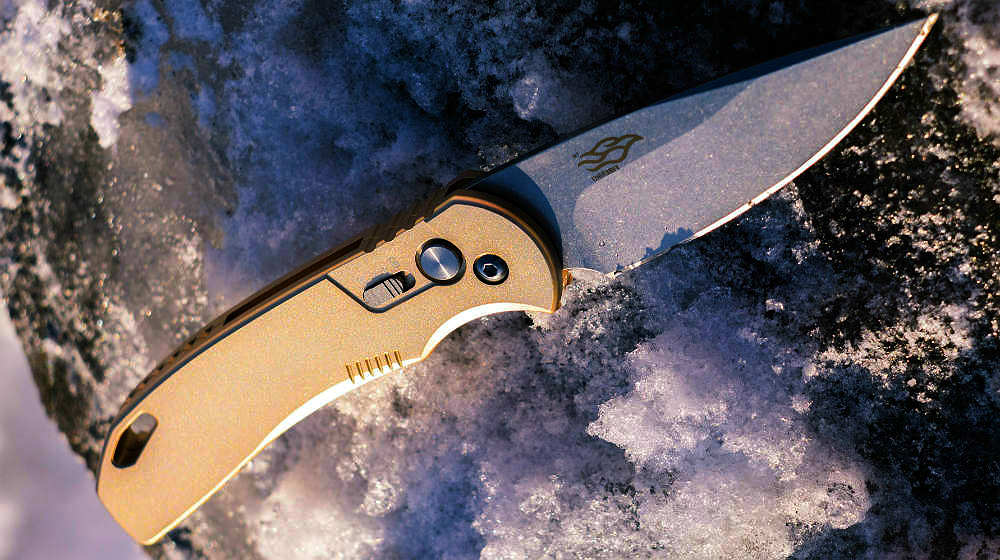
 Exports8 months ago
Exports8 months agoAre Switchblades Legal? Knife Laws By State

